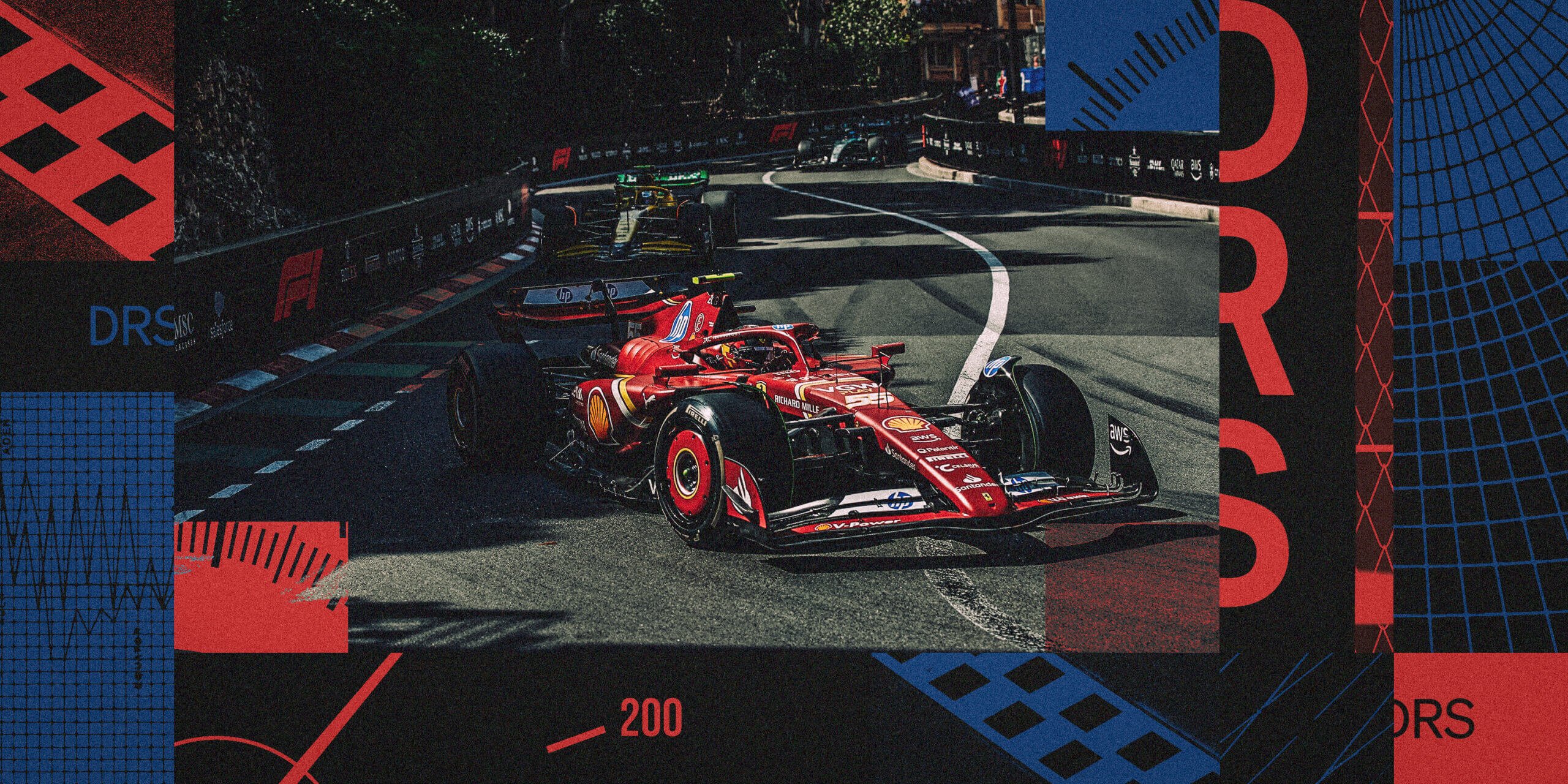Between the Racing Lines
| Formula One is complicated, confusing and constantly evolving. This story is part of our guide to help any fan — regardless of how long they’ve watched the sport or how they discovered it — navigate the pinnacle of motorsports.
Get ready to say goodbye to one of Formula One’s controversial elements, the Drag Reduction System (DRS).
F1’s governing body, the FIA, released a draft of the 2026 technical regulations on Thursday, detailing the design rules that aim to improve the car’s racability. One notable change is the replacement of DRS with Manual Override Mode.
DRS was introduced in 2011 and aimed to facilitate closer racing and help with overtaking. When the drivers press the button in certain zones dictated at the track (and the drivers need to be within a second of a competitor in front of them), the rear wing’s flap opens. The drag reduces and speed increases as a result. DRS has faced plenty of criticism over the years, including making passing too easy and making the racing feel artificial.
With the proposed 2026 technical regulations, a domino effect is set to occur. New active aerodynamics system will be introduced to help reduce drag while retaining downforce in the corners. Drivers essentially will switch between two different modes. Because the active aero will use the same flaps as the DRS setup, DRS as we know it had to go.
The goal to increase overtaking, though, remains. This led to the introduction of Manual Override Mode.
What is Manual Override Mode?
Manual Override Mode will rely on the electric power deployment coming from the MGU-K, which is part of the hybrid power unit. Essentially, the following car receives an energy boost while trying to overtake a competitor, and it is expected that it will operate under similar conditions as DRS (within a certain distance of the car in front). It’s to be confirmed whether there will be dictated zones, like what we currently have with DRS.
Diving into the techy details: The battery energy deployment for the car that’s ahead will begin tapering off after reaching 290 kph (180.198 mph), and hit zero at 355 kph (220.587 mph). The car following is expected to benefit from its full power allowance (350 kW) up to 337 kph (209.402 mph). Essentially, the following driver will have access to more electrical energy than their opponent ahead, and this boost could help them complete an overtake.
In a way, this system adds some spice into strategy because the drivers will need to recharge after using Manual Override Mode, rather than everyone using DRS in the same zones if they’re in similar windows. Fernando Alonso said, “I tend to agree of having kind of freedom to the drivers to use the power here or there and create alternative strategies, which now we are all deploying in the same places at the same time.”
How does this compare to IndyCar’s ‘push-to-pass’ system?
F1’s Manual Override Mode and IndyCar’s push-to-pass are similar — to an extent.
IndyCar’s system was introduced in 2009, and essentially, the drivers benefit from extra horsepower via a turbo boost, which can help with either defending or trying to nail a pass. When pass-to-push is meant to be used, race control enables it (similar to how DRS works in F1), and the button of each driver’s steering wheel is active.
Meyer Shank Racing crew chief Adam Rovazzini explained the concept in a recent video: Pushing that button sends a signal to the electronic control unit, and more air is pushed through the engine by the turbochargers to create a boost. Pushing that button sends a signal to the electronic control unit, and more air is pushed through the engine by the turbochargers to create a boost. Drivers don’t have unlimited access to this, though. It varies from track to track, and IndyCar dictates how many seconds-worth of push-to-pass drivers have access to, which can lead to differing strategies.
One of the glaring differences is that IndyCar drivers can use push-to-pass to defend against an attacking driver. Another is how F1 is using electrical power, while IndyCar (which does not use hybrids) receives a boost in horsepower from its turbocharged engines.
But is the battery boost a bad or good thing, considering F1’s upcoming power units will have over 300 percent more battery power (and a 50/50 split between electric power and internal combustion)?
“Time will tell! It’s one of those ones where, I guess I have faith in the Formula One paddock, let’s say, that there’s enough smart people to get on top of it,” Daniel Ricciardo said. “And if it’s maybe not ideal or perfect at the start, there’s enough brains that will solve it and enough people will catch on, and it’ll find its way to a good home.”
Although DRS itself may be consigned to F1 history from 2026, keeping some kind of overtaking aid was critical, particularly in this era of heavy, wide cars that are difficult to follow
“Removing DRS, especially with the current car,” Yuki Tsunoda said, “it’s hard to imagine without DRS how we can overtake.”
(Lead image: Xavier Bonilla/NurPhoto via Getty Images; Design: Eamonn Dalton/The Athletic)

